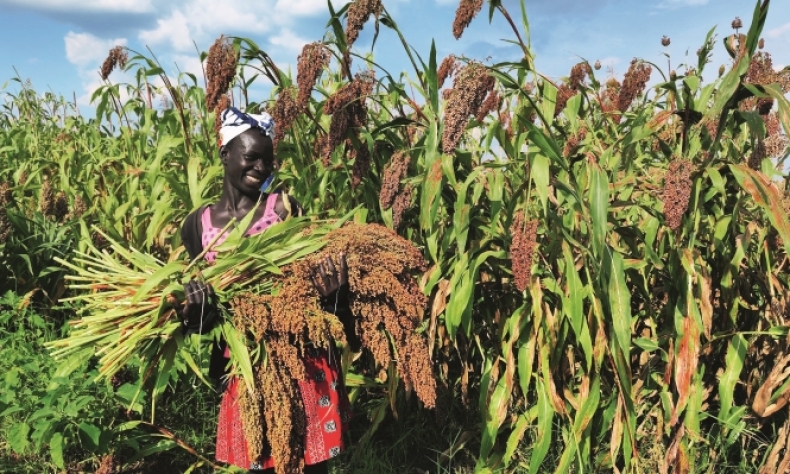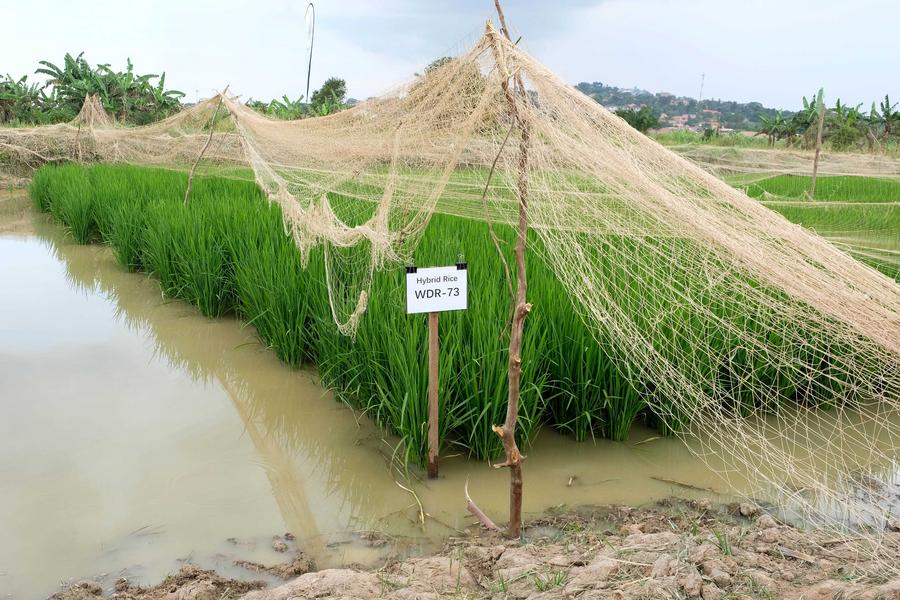From Scarcity to Abundance

Thousands of Ugandan farmers benefit from Chinese agricultural expertise under the South-South cooperation (SSC) project.
An agricultural revolution is taking place in the green fields of Uganda, and thousands of local farmers are cashing in. A South-South cooperation (SSC) project, a joint initiative aimed at boosting agricultural productivity and improving livelihoods, is in full swing.
As part of the project, hundreds of Chinese agriculture experts are in Uganda upskilling local farmers with the intricacies of modern agriculture.
The coordinator of the project in Uganda, Peter Muyimba, recently told ChinAfrica that there are 11,000 farmers in 32 districts around the country benefitting from the project, which was launched on 20 January 2023.
He said that China, through a tripartite agreement with Uganda and the Food and Agriculture Organization (FAO) of the United Nations, sent teams of experts to share experiences with smallholder farmers on how best to improve production using appropriate technologies. The cooperation is under the framework of the FAO-China-Uganda SSC Project, which is now in its third phase in Uganda.
“[A total of] 11,000 Ugandan farmers are benefitting from the third phase of the FAO-China-Uganda SSC Project, which, with funding worth $12.6 million, aims to support the development of the agriculture sector in Uganda. A total of $10 million was committed by Uganda, with the balance coming from China,” said Muyimba.
Agricultural skills transfer
Spokesperson of the Ministry of Agriculture, Animal Industry and Fisheries of Uganda Charlotte Kemigisha said, “The ministry is happy about the project because it is helping the local farmers to acquire [knowledge of] modern farming methods. With help from the Chinese agricultural experts, we have facilitated technology transfers and enabled improvements in the production and productivity of the crop, livestock, and fisheries sub-sectors.”
Kemigisha believes that the project has brought together Chinese experts and Ugandan growers to share knowledge, skills and technology. The result has been a remarkable transformation in the lives of thousands of farmers.
Smallholder farmers from 32 districts across the country are benefitting, including over 8,000 farmers of mainly rice and foxtail millet, 2,000 livestock farmers and hundreds of fish farmers in east, west and north Uganda, said Kemigisha. Through the project, inputs, technical assistance, training and knowledge exchange have been provided to help to create decent and inclusive jobs and to improve food and nutrition security.

Bright Rwamirama, state minister for animal industry, said he had seen that with the support of the Chinese and FAO’s coordination, “the Ministry of Agriculture, Animal Industry and Fisheries and its local counterparts have upscaled and commercialised Chinese hybrid rice production, foxtail millet production, and livestock and aquaculture production. They have also promoted trade and investment in order to contribute to the transformation of the agricultural sector and national economy of Uganda.”
Zhang Xiaoqiang, head of the Chinese agriculture team for the FAO-China-Uganda SSC Project, said that the team’s main objective was to make local farmers look at agriculture in a commercial way instead of subsistence.
“The Chinese technicians transfer knowledge and skills to the farmers through agriculture extension workers. We are promoting investment in the agricultural industry and high-quality products, and taking them to the Chinese market. We also encourage more Chinese enterprises to invest in Uganda, and to bring all their value chain,” said Zhang.
Farmers in action
George Dombo, a 45-year-old farmer from Uganda’s Butaleja District, is one of the beneficiaries of the project. He had struggled to grow maize on his small plot of land for some time, but after receiving training and input from the programme, his yields have increased significantly.
“I used to harvest only two to three bags of maize per acre,” said Dombo. “But now, I harvest up to 10 bags per acre! The Chinese experts taught me new techniques, such as crop rotation and soil conservation. My family’s income has increased, and we can now afford to send our children to school,” he added.
Similar stories are being repeated across the country. In the Lira District, 42-year-old Richard Okello has seen his rice yields triple after adopting new irrigation techniques and high-yielding rice varieties introduced by the programme.
“The programme has also helped us to access new markets,” said Okello. We’re now selling our produce to bigger buyers, which means more money.
Farmer Hellen Nabatanzi held the same sentiments. “This project has been a game-changer for us as we’ve learned so much already, and our crops are showing signs of improvement. We’re grateful for the support of the Chinese government and the FAO.”
Meanwhile, a rice dealer in Mbale District Chris Wambedde told ChinAfrica, “I can now buy enough rice from local farmers who have been taught how to grow the crop by Chinese experts. The FAO-China-Uganda SSC Project is a shining example of how international collaboration can drive sustainable development and improve lives. As the programme continues to grow and expand, thousands more farmers in Uganda are expected to benefit,” he said.
FAO said in a statement that the implementation of the project has so far yielded remarkable results. “Rice production increased four-fold, from 2.5 tonnes to 10 tonnes per hectare, while milk production rose from 2 to 7 litres per cow per day in some of the project areas. The project increased aquaculture production through low-cost fish-feeding techniques and helped to increase the incomes of rice-fish culture farmers, foxtail millet and mushroom farmers, through better production,” according to the statement.
The project is more than just an agricultural initiative – it is a symbol of cooperation and friendship between two nations, working together towards a common goal of food security and sustainable development. Years from now, as the project continues to flourish, Ugandan farmers will no doubt look back on this moment as a turning point in their country’s agricultural history.
 Facebook
Facebook
 Twitter
Twitter
 Linkedin
Linkedin
 Google +
Google +










